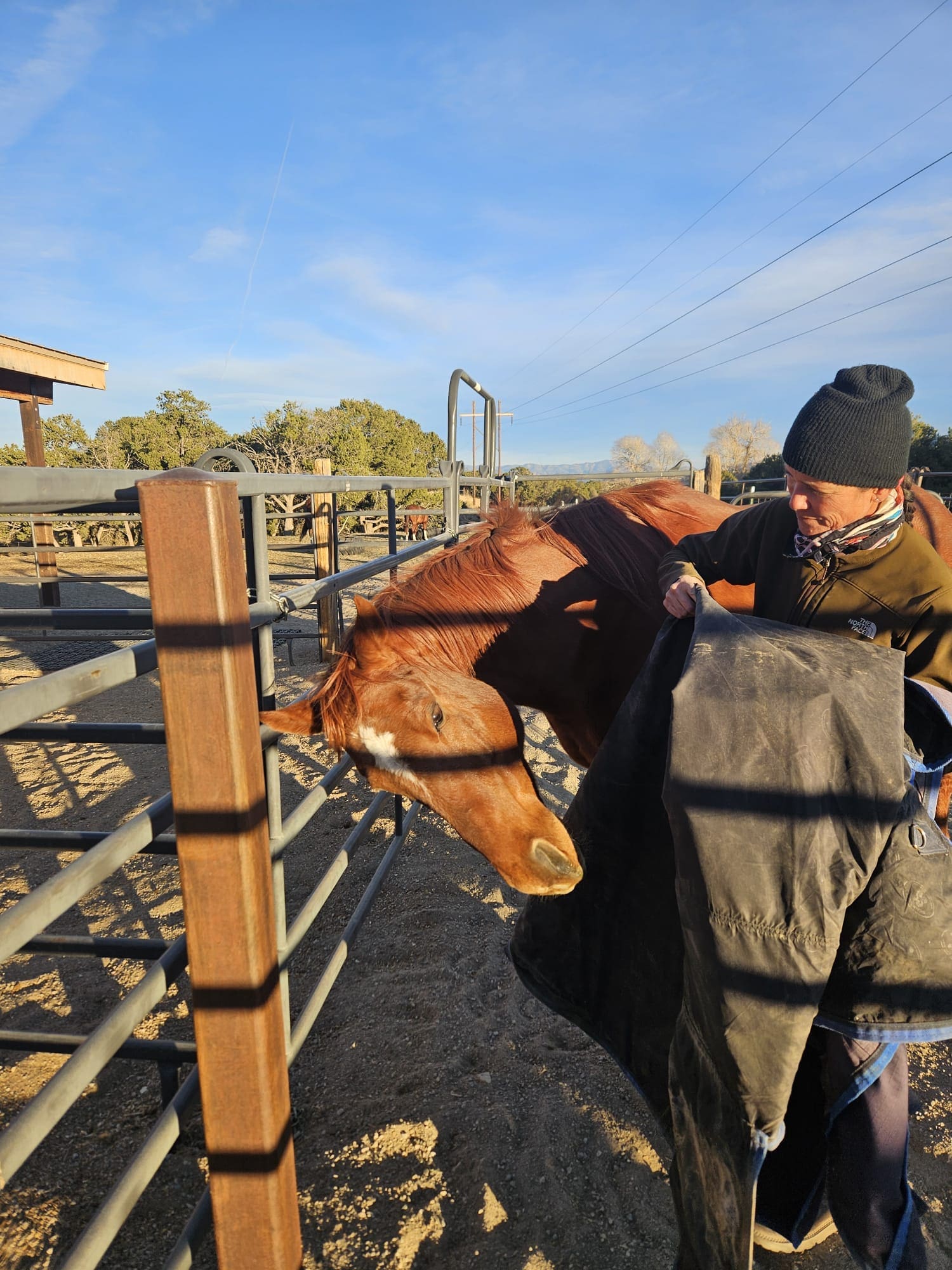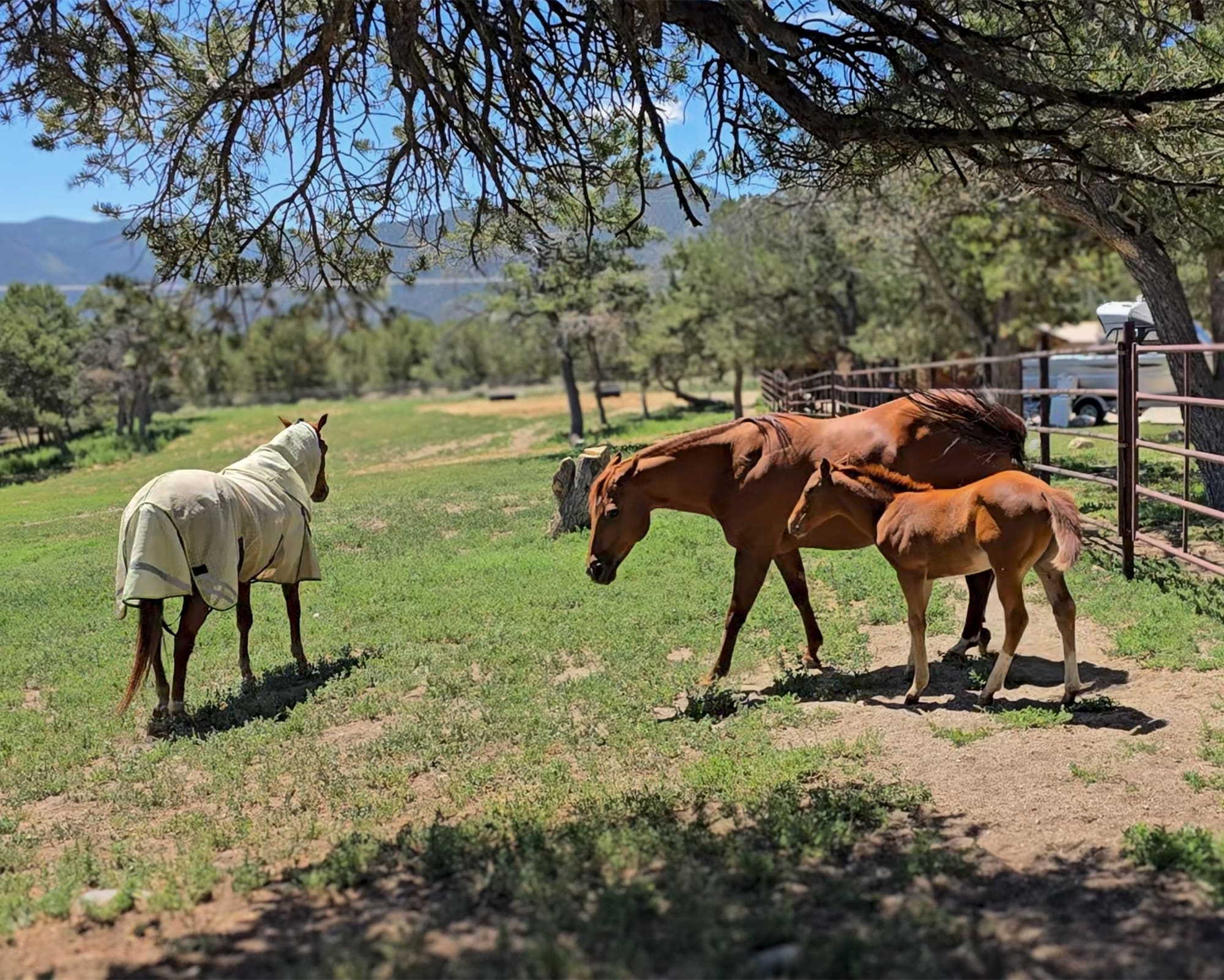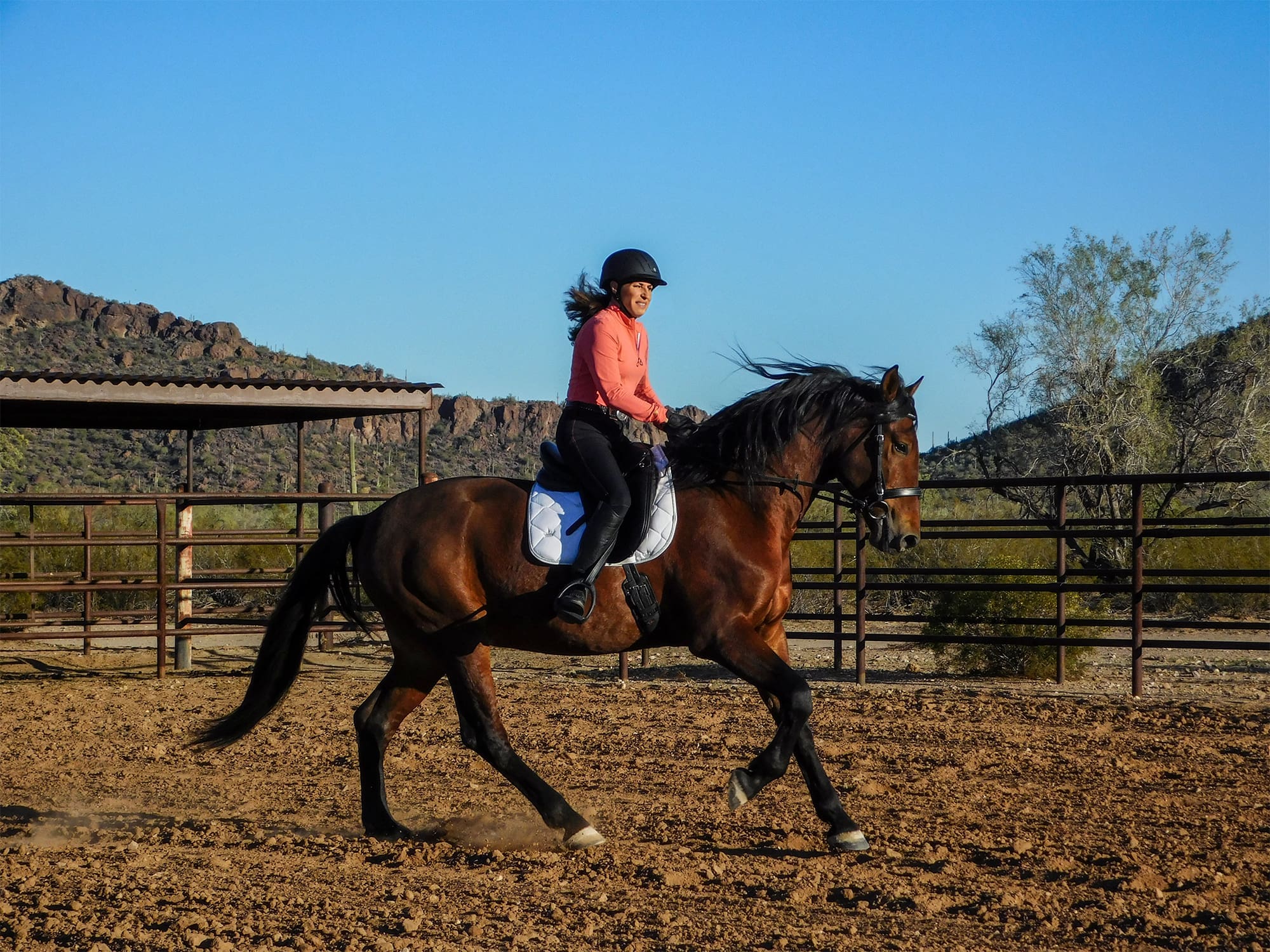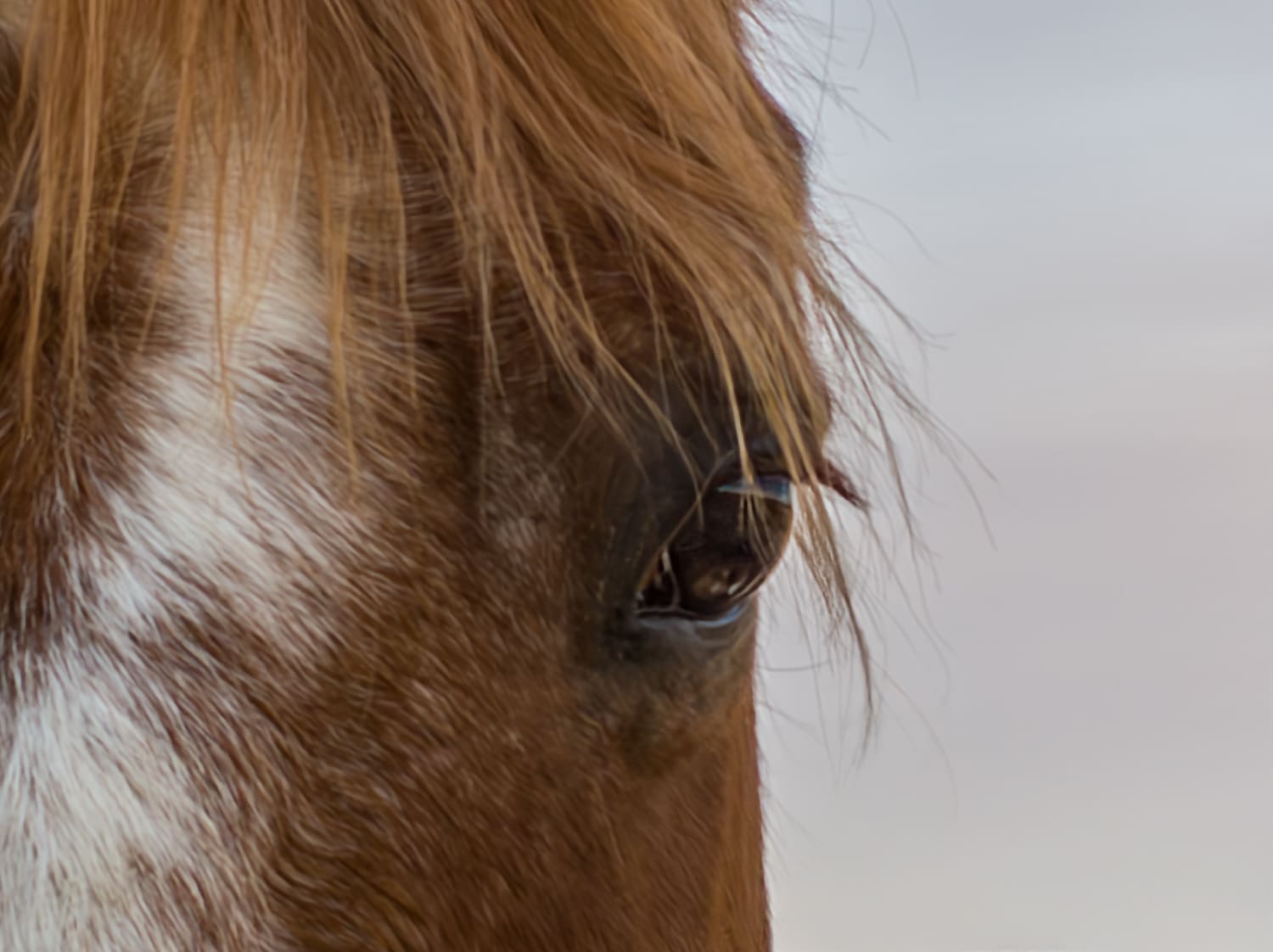
A horse owner recently reached out to me asking for guidance with a 3-year-old colt that came to her completely shutdown.
What does a “shutdown” horse look like? It’s an inexact term that is subject to interpretation. It is often described as a sullen or balking (freezing up) behavior that might come on suddenly from a fright, or develop gradually because of chronic fear, pain, frustration, or confusion.
In my mind, it evokes the image of a lethargic, nonresponsive horse with dull eyes and splayed feet—seemingly unable to move, and almost zombie-like. It’s basically the equine equivalent of sticking your fingers in your ears and saying “lalalalalalalala!” to block out disturbing news.
To me, there are many behaviors a shutdown horse may display in reaction to unclear, confusing, or painful cues from the rider (also called conflict behaviors). Some common examples of conflict behaviors are running through the bridle, refusing to respond as trained, excessive or progressive shying, rearing, bucking, or bolting.
The 3-year-old colt in question specifically presents as balking—feet splayed, statue-like, and momentarily unable to move when even the slightest amount of pressure is put on him. When I was growing up, balking horses seemed a lot more common than they are today (in my personal observation). That could be, in part, due to selective breeding, more prominent research dedicated to understanding horses, perhaps more importance is placed on equine welfare these days, or a combination of these.
There are innumerable reasons why a horse you are riding or handling might “sull up” or balk. In the moment, this typically looks like the horse physically loses its ability to move forward—it freezes.
The horse usually comes back into its normal movement either gradually (often after gentle coaxing from the rider or handler), or explosively—lunging into airs above the ground, sometimes rearing, striking, or bucking in the process. It’s somewhat unpredictable, and the latter is why you must always be cautious around balking horses.
Only within the span of my career has scientific research shed light on this kind of behavior. Simply put, the horse has lost its ability for normal forward movement in these moments due to a temporary disruption of its neural pathways. You can read more about the horse’s brain, neurology and behavior in Evidence-Based Horsemanship, by Dr. Stephen Peters & Martin Black.
It was from this book that I learned that as prey animals that are predisposed to flight, almost everything about their behavior revolves around movement.
From the moment a foal is born, its wobbly legs start wiggling and twitching. Within an hour of its birth, the foal magically transforms—gradually learning to stand, and then to walk, run, find its food, and follow its mother. All of this is instinctively-driven behavior.
Dr. Peters refers to these first moments of a foal’s life as the beginning of forming the “superhighways” of neural pathways. The neurons for its genetically predetermined movements are present at birth, but chaotically arranged. As the foal wiggles and squirms, the neurons align, forming the superhighways of neural pathways that stretch from its brain to its feet. These neural pathways allow the foal to gain the ability to walk, trot, gallop, rear, strike, spin, bolt, kick, and buck in the first few hours of life.
If a horse is under extreme duress, fear, pain, or confusion, these neural pathways may also become temporarily disrupted, and cause the horse to stop responding and shut down. (Think of a huge car wreck on the highway at rush hour that brings traffic to a dead stop.)
Today, scientific research has shown what astute horsewomen and men have known for centuries. That is, no matter what the origins of the statue-like behavior are, re-establishing forward movement is the first thing that needs to happen.
Forward motion is the basis of all training in the horse, and without forward motion, a horse cannot be trained.
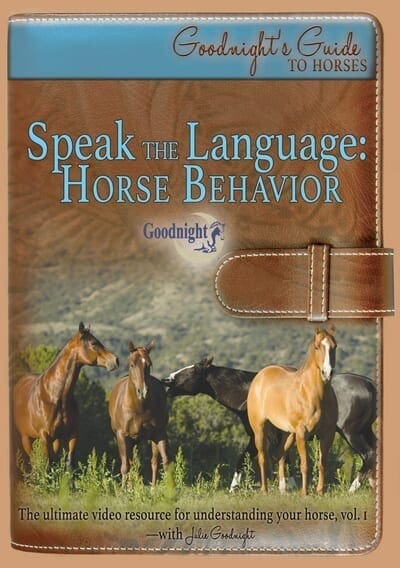
Speak the Language: Horse Behavior
The Ultimate Resource for Understanding your Horse
Learn the unique characteristics of a horse’s natural behavior so you are safer, more effective and can better relate to the needs of your horse.
To re-establish movement in a “stuck” horse
- Softly flex the neck, gently encouraging its head and neck to move from side to side and gradually unweighting the front feet right to left to right, until the horse takes a forward step.
- Give an instant release of pressure as soon as the horse attempts a forward step, and lavish copious praise on the horse—a negative reinforcement (the release, or taking away the pressure), followed by a positive reinforcement (adding praise).
- One or two steps forward will usually clear the disruption and restore traffic on the horse’s neural superhighways.
But, you might ask, “How did we get here?” Who among us would think it’s a good plan to push a baby horse to this point—damaging its psyche by using ineffective and relentlessly conflicting training methods?
Hopefully none of us intentionally set out to train this way, but ineffective training methods cause this to happen to horses every day. It’s far more common than you think, and it’s based on fundamental misconceptions and/or lack of understanding of the horse’s behavior and of learning theory.
Another one of my favorite horse books is Equine Behavior, A Guide for Veterinarians and Equine Scientists, by Professor Paul McGreevy. I’ll warn you that it is a very expensive book, and highly technical to read, but downright fascinating to me. I read the first edition about 20 years ago, and it has profoundly influenced the way I train and teach.
In his book, Professor McGreevy discusses modern and classical training techniques, considering them to be less effective and often lacking a basic understanding of learning theory. To be fair, humans have been training horses for thousands of years, but learning theory has only been understood for half a century or so. It’s no wonder that the principles of learning theory are not inherent in horsemanship.
He says, “Behavioral responses have evolved [in horses] to lead to the reduction of the basic drives, including hunger, thirst, sexual desire, and freedom from predators, pain, and discomfort. Throughout their lives, horses learn to offer responses that result in the reduction of these drives. … They learn that the pressure of the rider’s legs goes away when they move forward; that the pressure of the bit/reins goes away when they stop.
“An obedient horse is one that offers desirable learned responses which, under the control of humans, override instincts such as to run, eat, socialize, and copulate in the presence of eliciting stimulus. …confusion (and therefore conflict) often arises in horses unless the basic responses have been installed thoroughly in the first place by trial-and-error learning through negative reinforcement.”
Now, before anyone automatically thinks “negative reinforcement” must mean something bad, please read on. It refers to the release of pressure, with “negative” being the taking away of pressure to help the horse learn. The pressure is not harsh or mean, it might be anything from a simple voice signal like clucking to trot, the touch of the rider’s leg to move forward, or gentle pressure from the lead rope to walk. Because horses are animals that feel pressure very keenly—physical, mental, environmental—they learn rapidly, and respond well to the application and release of pressure.
But if the pressure is painful or unexpected, then it is no longer negative reinforcement—this is called “positive punishment.”
In the training of horses, we mostly use “combined reinforcement,” which refers to both the negative and positive reinforcers. For example, I ask the horse to trot with a signal (pressure from my legs), and as soon as the horse begins to move, I take away the leg pressure (this is negative reinforcement). Then I also praise the horse with a soft, “Good boy,” and a scratch on its withers (positive reinforcement). It is a good thing for horses when the release comes quickly and often, and they learn rapidly, with a calm and willing demeanor.
When this is done incorrectly as the horse tries to learn—signals and cues are unclear or inconsistent, releases are ineffective or absent, and pressure remains no matter how the horse responds— is when conflicts arise. When horses consistently cannot obtain their freedom from such pressures, the conflict becomes chronic and overwhelming.

Want a Saddle Fast, at the BEST Price?
Balanced Ride • Narrow Twist • Comfort for Horse & Rider
Ready to Ship Today! (719) 530-0531
A common example according to Professor McGreevy is when the horse is “trapped between the rider’s go cues and stop signals (legging forward while pulling back on reins). Unable to resolve the pain, they may resort to shying, spinning away, leaping, or bucking, depending on their genetic makeup.
“In training situations, chronic states of stress and conflict increasingly emerge when the association between cues and outcomes is not sufficiently predictable for the horse (the stimulus does not always lead to the same response, and a deteriorated state of pressure-release responses prevail).”
Horses learn quickly and with a calm mind when appropriate (and light) pressure is applied. First, they begin to guess at what will cause the pressure to go away, so you need to patiently wait for the horse to guess correctly. As soon as the horse begins to give the correct answer, you must completely take away the pressure.
In the right conditions, the horse will often learn the correct response after the very first release. Split-second timing on the release is the secret to training horses quickly and with low stress—not with repetition and drilling, as many equestrians have believed for centuries.
I feel very sad for this 3-year-old colt who’s been subjected to confusing and ineffective training methods (perhaps even from a handler who thought they were doing it right). However, I’m quite confident this young horse can be brought out of its state of confusion and learn the basic responses it needs to become a successful riding horse.
This colt needs to go back to the most basic of training—with exceptional kindness and patience—and it is of the utmost importance that he is given all the time he needs to learn the correct responses. He may need many chances to even try to guess the answer. I would start by patiently teaching it to move forward with a simple, clear, and soft cue. I’ve always enjoyed working with troubled horses, but I can only help so many—and the need is great.
In fact, the world would be a much happier place for horses if more people understood equine behavior and physiology better, and especially if the individuals responsible for training horses understood more about learning theory. These two books are excellent resources to begin increasing your depth of knowledge (share them with others you think would benefit too!).
In my podcast this month, I have the honor of interviewing Dr. Kate Fenner, an equine behaviorist from Australia and colleague of Professor McGreevy. It will be a fascinating and lively discussion about horse behavior and how training methods can be improved for performance horses. It’s an episode you don’t want to miss, so make sure you’re subscribed to Ride On with Julie Goodnight. It’s available at JulieGoodnight.com/podcast, and anywhere you listen to podcasts.
RESOURCES:
Equine Behavior: A Guide for Veterinarians and Equine Scientists, 2nd Edition, Professor Paul McGreevy, Saunders Ltd, 2012
Evidenced-based Horsemanship, Dr. Stephen Peters & Martin Black, Wasteland Press, 2018
Horse Brain, Human Brain: The Neuroscience of Horsemanship, Dr. Janet Jones, Trafalgar Square, 2020

